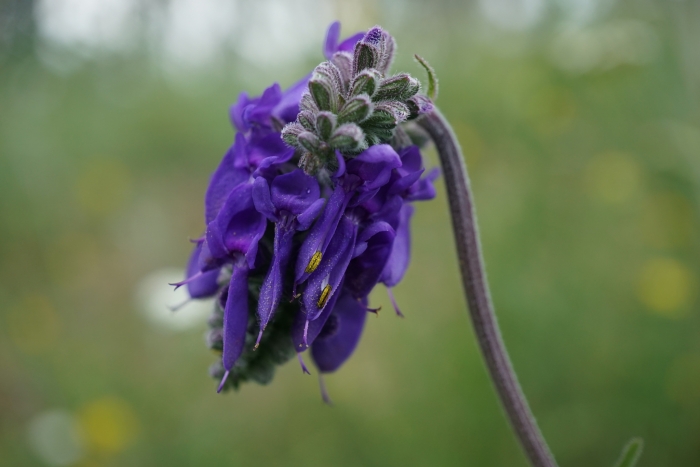Nodding Sage
(Salvia nutans)
Nodding Sage (Salvia nutans)
/
/

© xulescu_g
CC BY-SA 4.0
Image By:
© xulescu_g
Recorded By:
Copyright:
CC BY-SA 4.0
Copyright Notice:
Photo by: © xulescu_g | License Type: CC BY-SA 4.0 | License URL: http://creativecommons.org/licenses/by-sa/4.0/ | Uploader: xulescu_g | Publisher: iNaturalist |

























Estimated Native Range
Summary
Salvia nutans, commonly known as nodding sage, is a perennial herb native to meadows, steppes, and rocky slopes in Central and Eastern Europe, the Caucasus, and parts of Western Asia, including Siberia. It typically grows up to 24 inches (61 centimeters) tall and is characterized by its arching inflorescences with nodding, tubular, blue to violet flowers that bloom from late spring to early summer. The flowers are highly attractive to pollinators such as bees and butterflies, adding ecological value to its native regions.
Nodding sage is valued for its ornamental appeal, particularly the distinctive nodding flower spikes that sway gracefully in the breeze. It is well-suited for rock gardens, borders, and wildflower meadows, where its low maintenance and drought tolerance are advantageous. In cultivation, it thrives in full sun to part shade and requires dry to medium moisture, well-drained soils. While not invasive, it can naturalize in suitable conditions outside its native range. Gardeners should be aware that, although it is generally pest-free, it can be susceptible to root rot in poorly drained soils.CC BY-SA 4.0
Nodding sage is valued for its ornamental appeal, particularly the distinctive nodding flower spikes that sway gracefully in the breeze. It is well-suited for rock gardens, borders, and wildflower meadows, where its low maintenance and drought tolerance are advantageous. In cultivation, it thrives in full sun to part shade and requires dry to medium moisture, well-drained soils. While not invasive, it can naturalize in suitable conditions outside its native range. Gardeners should be aware that, although it is generally pest-free, it can be susceptible to root rot in poorly drained soils.CC BY-SA 4.0
Plant Description
- Plant Type: Herb
- Height: 2-4 feet
- Width: 1-2 feet
- Growth Rate: Moderate
- Flower Color: Blue, Purple
- Flowering Season: Spring, Summer
- Leaf Retention: Deciduous
Growth Requirements
- Sun: Full Sun, Part Shade
- Water: Low, Medium
- Drainage: Medium
Common Uses
Bee Garden, Bird Garden, Border Plant, Butterfly Garden, Hummingbird Garden, Low Maintenance
Natural Habitat
Meadows, steppes, and rocky slopes in Central and Eastern Europe, the Caucasus, and parts of Western Asia, including Siberia
Other Names
Common Names: Drooping Salvia
Scientific Names: , Salvia nutans, Salvia acutifolia, Salvia betonicifolia, Salvia cernua, Salvia cernua, Salvia cremenecensis, Salvia grandiflora, Salvia hastata, Salvia nutans subsp. ruthenica
GBIF Accepted Name: